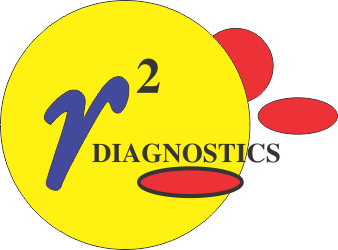Phosphoplastin RL
Assay Type
Prothrombin Time
Description
Liquid Thromboplastin, ISI < 1.5
Intended Use
Phosphoplastin RL is intended for use in the one-stage Prothrombin Time (PT) test and in PT based hemostasis assays. The PT can be used to screen for coagulopathies, for extrinsic factor assays, and for therapeutic monitoring of Warfarin and related drugs.
Uses
The Prothrombin Time (PT) Test is used to:
- Screen for congenital or acquired deficiencies in the extrinsic and common pathways
- Monitor warfarin therapy
- Aid in diagnosis of DIC
- Aid in diagnosis of inhibitors to Factors II, V, and X.

Ordering Information
| Catalog # | Product | Kit Configuration | Regulatory Classification | Product Insert (PDF) |
|---|---|---|---|---|
| 11-305 | Phosphoplastin RL | 10 x 5 mL | 510(k), CE | LL-4500_F PT RL |
| 11-310 | Phosphoplastin RL | 10 x 10 mL | 510(k), CE | LL-4500_F PT RL |
Principle of the Test
Phosphoplastin RL is a sensitive rabbit brain based thromboplastin. Thromboplastins are mixtures of Tissue Factor (Factor III), phospholipid, and calcium (Factor IV). Thromboplastins can be manufactured from animal tissue including brain, lung, or placenta, or using recombinant protein technologies, and are the reagent used in the Prothrombin Time test. Tissue Factor, a membrane bound protein, is the regulatory co factor for Factor VII, and in all thromboplastins is associated with phospholipid vesicles. TF binds circulating FVII and FVIIa; TF bound FVII is catalyzed to FVIIa. The TF:VIIa membrane complex catalyzes the conversion of FX to FXa and FIX to FIXa. In vivo, the coagulation cascade proceeds through the common pathway until TFPI inhibits the TF:VIIa:Xa membrane complex, and through the intrinsic pathway via FIXa. In vitro the TF:VIIa catalyzed Xa is the predominate mechanism leading to clot formation. The Prothrombin Time test is performed by adding two volumes of Phosphoplastin RL to one volume of citrated patient plasma and recording the time of clot formation.
Reporting Units
There are several methods to express the results of the PT test. The most common for general use is to report the clotting time in seconds. For warfarin monitoring the most common reporting method is the INR; in certain countries an alternative normalization method is the Prothrombin percent activity.
Handbooks and Guidelines
- Prothrombin Time (PT), page 193-196, in Lapasota et. al., The Clinical Hemostasis Handbook, Year Book Medical Publishers, 1989. This handbook is no longer in print, but many pathologists have a copy.
- Krishnan J, Chapter 6, “Coagulation Testing”, and Cunningham and Rund, Chapter 11, “Prolonged Prothrombin Time”, inAn Algorithmic Approach to Hemostasis Testing, Kottke Marchant ed., CAP Press, 2008
- Clinical Laboratory Standards Institute, “Defining, Establishing, and Verifying Reference Intervals in the Clinical Laboratory; Approved Guideline – Third Edition”, CLSI document C28-A3, 2008.
- Clinical Laboratory Standards Institute, “Collection, Transport, and Processing of Blood Specimens for Testing Plasma-Based Coagulation Assays and Molecular Hemostasis Assays; Approved Guideline – Fifth Edition”, CLSI document H21-A5, 2008.
- Clinical Laboratory Standards Institute, “One-Stage Prothrombin Time (PT) Test and Activated Partial Thromboplastin Time (APTT) Test; Approved Guideline – Second Edition”, CLSI document H47-A2, 2008.
- Tripodi A, Chapter 18 “Monitoring Oral Anticoagulant Therapy”, in Quality in Laboratory Hemostasis and Thrombosis, Kitchen, Olson, and Preston ed., Wiley-Blackwell, 2009.
- Clinical Laboratory Standards Institute, “Procedures for Validation of INR and Local Calibration of PT/INR Systems; Approved Guideline”, CLSI document H54-A, 2005
Related Links
Prothrombin Time (PT) Test in the Massachusetts General Hospital Clinical Laboratory Handbook Coagulation Test Handbook
